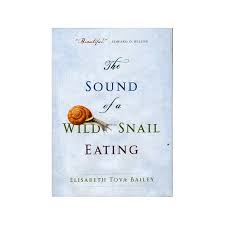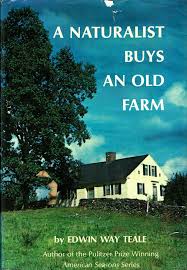By Anne Kilgannon
A recent Guardian article suggested that now would be a good time to read Middlemarch by George Elliot (weighing in just shy of 900 pages in my old Penguin Books copy) while we’re stuck at home and needing distraction from the distractions of CNN reports and the like. War and Peace might work that way too, but I looked on my shelf, instead, for something uplifting and inspirational, something from Nature that would both ground and reset my anxious mind. I reached for books like these:

I’ve had this book, The Sound of a Wild Snail Eating, by Elisabeth Tova Bailey, for a while and thoroughly enjoyed my first read of it but it has never felt so timely to read again, just what we need now in our present apprehensive and isolated condition. It is quiet, pensive, and a great deal of the story takes place in the dark—metaphorically as well as literally in the middle of the night. And yet it is full of an inner light, full of connection and illumination and discovery. The pace is as slow moving as, yes, a snail, but the journey is immense. And could, or should be, universal; there is so much to absorb and learn here.
I begin with this canvas of images that is seemingly full of contradictions, dark and light, quiet but bursting with interior adventure, to give you a hint of the richness of this small, but not slight, book. It is a book to be read in bed, easy on the hand, but if not a bedtime choice, you’ll find yourself pausing and then reading, going outside to wander your garden and look closely under leaves, and then reading some more. This book is a procession of images that stay with you and color your day. You’ll see more clearly for reading it, and appreciate every sun-struck mote and uncurling fern frond. The smaller life forms will call to you, to kneel and peer and marvel.
You see, the sturdy protagonist of this memoir is a forest dwelling snail whose daily—and nightly—journeys of exploration captivate the author who observes, and with growing fascination, records the adventures of this intrepid being as it forays into its new world. Elisabeth Bailey is bedridden, struck down by a pathogen she picked up on an overseas trip which has upended her active life and threatened her very existence. But although immobilized, she is still curious and observant and increasing open to delight. The presence of the snail recalls her to these qualities of being in the world; as the snail waves its tentacles “as though responding to a distant melody,” those strains of music suffuse Bailey’s imagination too, and her life is the richer for it. I highly recommend a deep sinking into this marvelous story.
After you’ve made the acquaintance of this lovely creature, there is available online a short movie trailer of a film that Bailey directed later about the life of this snail. I am of the school of thought that you should first read the book and then watch the snail on film so that Bailey’s exquisite writing is given its full chance to reveal its magic before adding the “visual.” But it’s up to you. Click here to view the video.

Another book that always restores my wonder in the world is by Edwin Way Teale: A Naturalist Buys an Old Farm. This book was first published in 1974 but my copy is a re-issue so I assume it is available to readers now. This is not a book about farming unless the “crops” are wild flowers, woodchucks and butterflies. Teale and his wife Nellie, after a long search, found an old overgrown farm in upstate Connecticut and there settled down to exploring and memorializing every nook and corner of their acres. Their expert command of botanic, ornithological, entomological, and other natural historical disciplines enrich their observations but it is their abiding love of Nature that makes this book shine.
The Teales take us with them through every season and each discovery they make as they follow secret deer paths, uncover the hidden life in old rock walls and stand at dawn and dusk, observing, noting, appreciating everything from the rustle of birds in the undergrowth, to the slow drop of autumn leaves, and the hum of insects in a summer field. They lead us to slow down, in fact, kneel down the better to examine some flower or fern. There is a delightful description, alas too long to include here so rich in detail as it is, of what can be seen from a hammock slung between trees in a wood. Everything is of interest, everything contributes to the whole buzzing picture of the life they found there.
Here is one small encounter: “Stretches of that white-flowered aromatic herb, the narrow-leaved mountain mint, swarmed with nectar-hunters—bees, wasps, flies, and butterflies. I never tired of watching the little pearl crescents wind along the aisles among the slender stems. Once at one of these stands of mountain mint, on a day spiced with dangerous living, I delicately stroked with a forefinger the backs of eighteen bumblebees while they were lost in the delights of nectar-drinking.”
The quiet humor, the exacting detail, and the open-hearted affection are shared with the reader and draw us in; we too can feel the fuzz on the back of a bumblebee! An unexpected joy! And this is just one instance of many. Our sense of wonder is renewed, our connection to the world is restored as we read these books. This is food for the heart and senses, timely and so needed.







